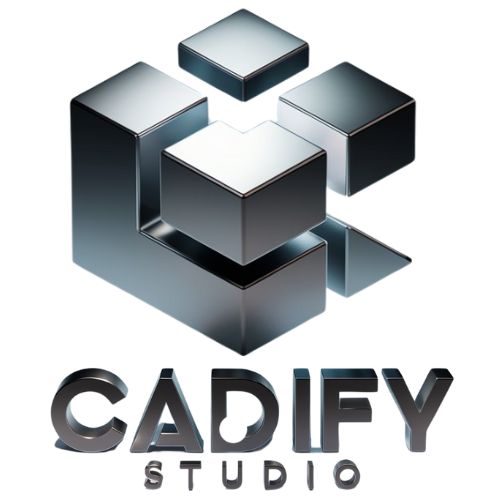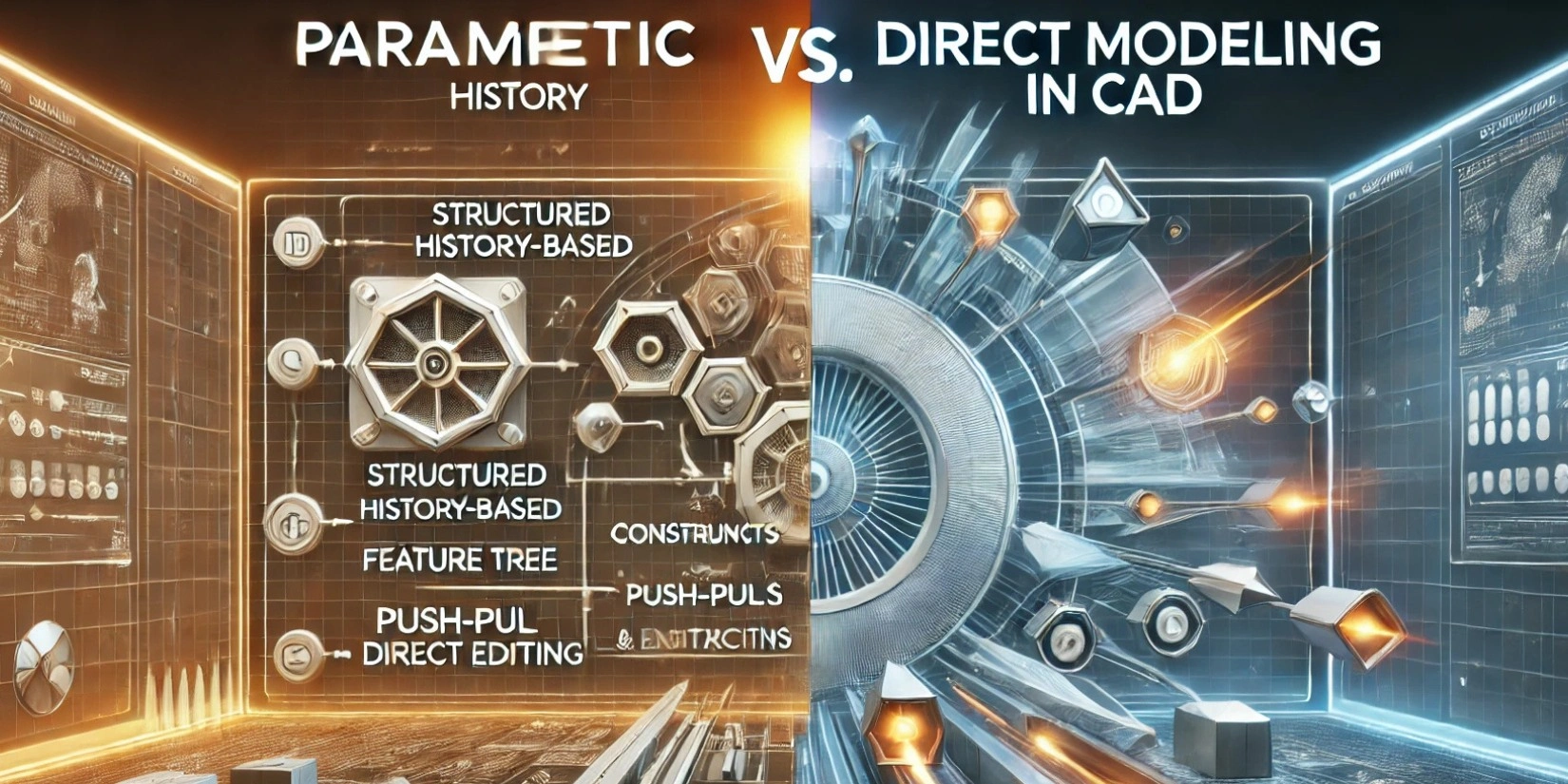In the world of CAD modeling, selecting the right approach is crucial for efficient and accurate 3D design. Two primary modeling techniques – Parametric Modeling and Direct Modeling—offer distinct benefits and are used in different phases of product design and development. Understanding these methods helps engineers, designers, and manufacturers streamline their workflow and improve productivity.
What is Parametric Modeling?
Parametric Modeling is a history-based approach where design intent is controlled by parameters, constraints, and a feature tree. Each modification follows a structured process, ensuring that every design change maintains relationships between different parts.
Key Features of Parametric Modeling
- History-based modeling: Changes follow a step-by-step history.
- Feature tree: Every modification is logged for future edits.
- Constraints & dimensions: Ensure precise control over the design.
Advantages of Parametric Modeling
- Automated updates: Changes reflect instantly across the model.
- Maintains design intent: Ensures design consistency.
- Ideal for complex parts: Preferred for mechanical and industrial designs.
Disadvantages of Parametric Modeling
- Requires careful planning: Early-stage modifications can affect the entire model.
- Large file sizes: Complex parametric models require more computing power.
- Less flexibility: Modifying later stages of a design can be tedious.
What is Direct Modeling?
Direct Modeling is a history-free approach that allows users to modify geometry without constraints or predefined parameters. It provides speed and flexibility, making it ideal for concept designs and rapid iterations.
What is Parametric Modeling?
Parametric Modeling is a history-based approach where design intent is controlled by parameters, constraints, and a feature tree. Each modification follows a structured process, ensuring that every design change maintains relationships between different parts.
Key Features of Direct Modeling
- Push-pull editing: Move, reshape, or adjust designs instantly.
- No feature tree: Changes are independent and not bound by history.
- Greater flexibility: Easily modify imported CAD files without constraints.
Advantages of Direct Modeling
- Faster design process: Instant modifications without complex constraints.
- Highly flexible: Ideal for concept design and rapid prototyping.
Works with multiple - CAD formats: Can edit imported STEP, IGES, and STL files
Disadvantages of Direct Modeling
- Lack of design intent: No parametric relationships, making it harder to maintain consistency.
- Difficult to replicate identical features: Manual modifications required for repetitive elements.
- Limited control over dimensions: Precise adjustments can be challenging.
Best Applications of Direct Modeling
- Concept development & early-stage design
- Rapid prototyping
- Modifications of existing designs
Parametric vs. Direct Modeling: Which is Better?
| Feature | Parametric Modeling | Direct Modeling |
|---|---|---|
| History-Based | Yes | No |
| Feature Tree | Yes | No |
| Design Intent Control | Strong | Weak |
| Speed & Flexibility | Moderate | High |
| Best for | Engineering, Manufacturing | Concept Design, Prototyping |
| Ideal for Complex Designs | Yes | No |
Choosing the Right Method
- If precision and structured design are needed → Use Parametric Modeling.
- If speed and flexibility are more important → Use Direct Modeling.
- If your workflow includes both structured and flexible modeling, consider Hybrid Modeling.
Hybrid Modeling: Combining Both Approaches
Hybrid Modeling blends the benefits of parametric and direct modeling, enabling users to switch between structured and freeform editing as needed.
Benefits of Hybrid Modeling
- Greater flexibility in complex design processes.
- Efficient modifications without losing parametric constraints.
- Seamless collaboration across different CAD software.
Software that Supports Hybrid Modeling
- Autodesk Fusion 360
- Siemens NX
- PTC Creo
Factors to Consider When Choosing a CAD Modeling Method
- Design Complexity: Parametric modeling is best for intricate mechanical parts.
- Collaboration Needs: Direct modeling is ideal for working with multiple software.
- Learning Curve: Parametric modeling requires expertise; direct modeling is beginner-friendly.
- Industry Applications: Choose based on whether you need precision or flexibility.
Best Software for Parametric & Direct Modeling
Best Parametric Modeling Software
- SolidWorks
- Creo
- Siemens NX
- CATIA
Best Direct Modeling Software
- Autodesk Fusion 360
- SpaceClaim
- Onshape
Conclusion: How Cadify Studio Can Help
Both Parametric Modeling and Direct Modeling offer unique advantages. The best approach depends on your project requirements, design complexity, and workflow needs. If you are looking for expert assistance in CAD modeling, product design, or prototyping, Cadify Studio provides top-notch parametric and direct modeling services to help bring your ideas to life efficiently.
Get in Touch
Want to create high-quality 3D models for your next project? Contact Cadify Studio for expert CAD design services today! Explore our resources or get a free consultation on the best modeling approach for your needs.

